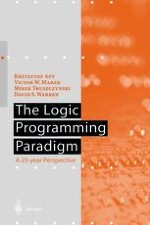Logic Programming was founded 25 years ago. This exciting new text reveals both the evolution of this programming paradigm since its inception and the impressively broad scope of current research in Logic Programming. The contributions to the book deal with both theoretical and practical issues. They address such diverse topics as: computational molecular biology, machine learning, mobile computing, multi-agent systems, planning, numerical computing and dynamical systems, database systems, an alternative to the "formulas as types" approach, program semantics and analysis, and natural language processing. The contributors are all leading world experts in Logic Programming and their contributions were all invited and refereed.
